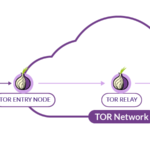In today’s world, email has become the primary medium of communication for both personal and professional purposes. But it’s important to be aware that email is an inherently insecure method of communication. If an email is intercepted, its contents can be easily read and its attachments can be easily accessed.
Email security technologies such as Pretty Good Privacy (PGP) and Secure/Multipurpose Internet Mail Extensions (S/MIME) help you to ensure that email messages and their attachments remain secure, authentic, and confidential.
What is PGP?
PGP provides cryptographic privacy and authentication for email communications. It uses a public-key cryptography system that ensures that only the intended recipient can read the message. PGP creates a digital signature that can verify the authenticity of the sender and confirm that the message has not been tampered with since it was sent.
PGP uses a private/public key pair to encrypt and decrypt messages. The sender encrypts the message using the recipient’s public key. The recipient can then use their private key to decrypt the message.
What is S/MIME?
Secure/Multipurpose Internet Mail Extensions (S/MIME) is a standard encryption technique for email that provides message authentication, integrity, and privacy. S/MIME works by attaching a digital signature to the message, ensuring that the recipient can verify the authenticity of the sender.
S/MIME also supports encryption, meaning the contents of the email are scrambled, making it unreadable by third parties who may intercept the message. An analogous private/public key pair encryption mechanism is also used in the S/MIME protocol, similar to PGP.
Why Use PGP or S/MIME?
Email encryption technologies such as PGP and S/MIME are essential tools for protecting your online privacy and security. These technologies help ensure that your email messages and their attachments remain secure, authentic, and confidential. This is particularly important for sensitive information such as medical records or government information.
PGP and S/MIME provides an added layer of security by encrypting your messages with a private key unique to you. This means that only you and the intended recipient of the message can read it, and a potential third party intercepting the message cannot.
How Do You Use PGP or S/MIME?
Using PGP or S/MIME is a multi-step process that requires you to install specific software on your computer first.
- Obtain a public key from your intended recipient. This can be done through your email client or other external sources such as a key exchange server.
- Install software on your email client that can generate your private key.
- Compose a new email and then click on the PGP or S/MIME button (the location of the button depends on your email client) to digitally sign and encrypt the email.
- Enter the intended recipient(s) public key as a recipient for the email, then send the secured email; only the receiver(s) with the matching private key will be able to decrypt and read it.
Conclusion
Email security should never be taken lightly, and using encryption technologies such as PGP or S/MIME can go a long way in ensuring your online privacy and security. As always, follow the best practices, using strong passwords, choose a reliable email provider, and stay informed of emerging threats to ensure your digital privacy and security remain a top priority.
For more information on PGP or S/MIME, refer to the following reliable sources:







